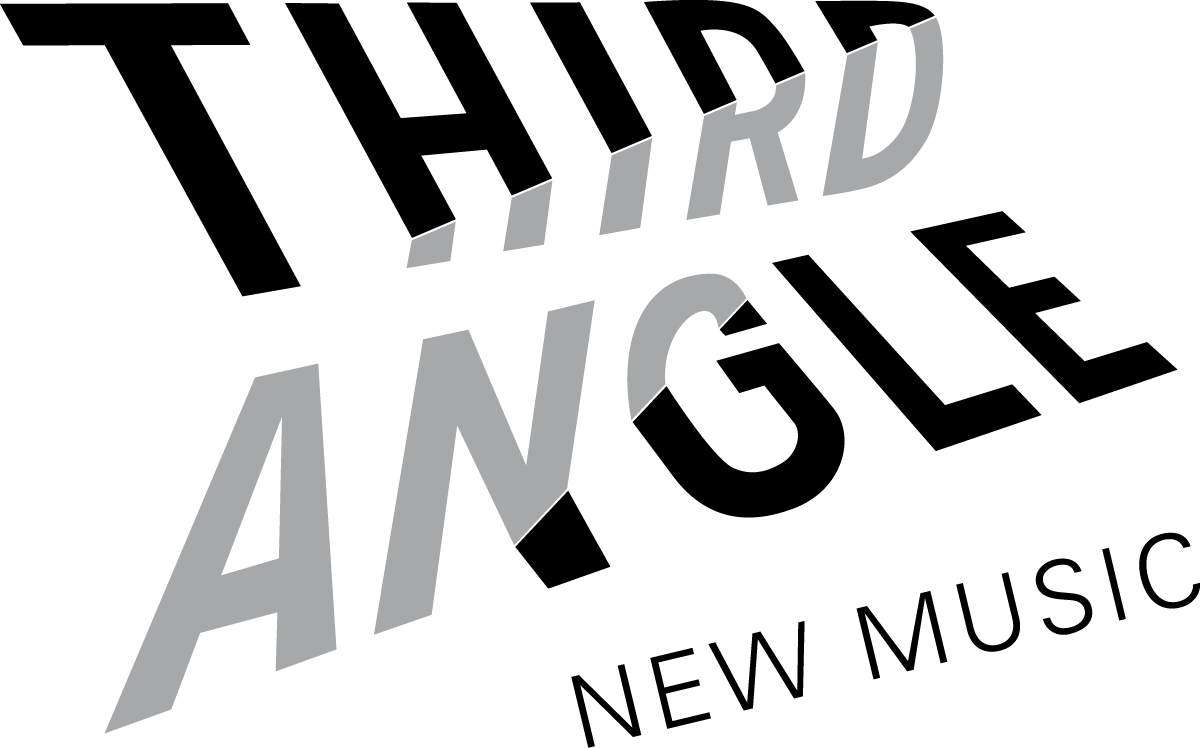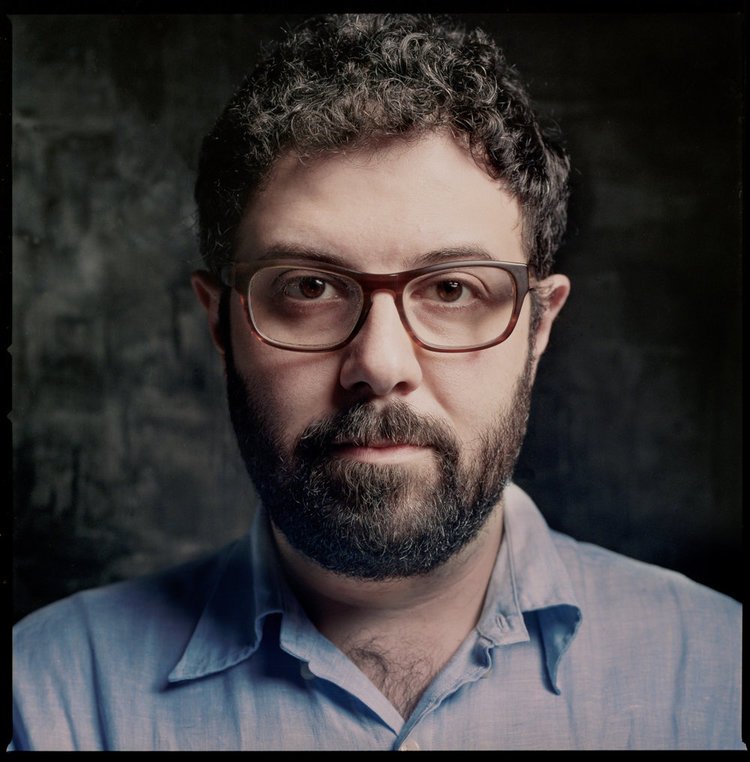Welcome! Here are the extended program notes for tonight’s show:
WORKS
Jerod Impichchaachaaha’ Tate | Pisachi (2013) Learn more
Chris Cerrone | Nervous Systems (2022)* Learn more
Gabriel Kahane | String Quartet No. 1 - "Klee" (2021)*
Adolphus Hailstork | Three Smiles for Tracy (1989)
*denotes NW premiere
PERFORMERS
James Shields, clarinet
Emily Cole, violin
Megumi Stohs Lewis, violin
Wendy Richman, viola
Valdine Ritchie Mishkin, cello
ABOUT THE COMPOSERS
Jerod Impichchaachaaha’ Tate
Jerod Impichchaachaaha’ Tate is a citizen of the Chickasaw Nation in Oklahoma and is dedicated to the development of American Indian classical composition. His Washington Post review states that “Tate is rare as an American Indian composer of classical music. Rarer still is his ability to effectively infuse classical music with American Indian nationalism.”
Tate is Guest Composer/Conductor/Pianist for San Francisco Symphony Currents program Thunder Song: American Indian Musical Cultures and was recently Guest Composer for Metropolitan Museum of Art’s Balcony Bar program Home with ETHEL and Friends, featuring his commissioned work Pisachi (Reveal) for String Quartet.
Recent commissions include Shell Shaker: A Chickasaw Opera for Mount Holyoke Symphony Orchestra, Ghost of the White Deer, Concerto for Bassoon and Orchestra for Dallas Symphony Orchestra, Hózhó (Navajo Strong) and Ithánali (I Know) for White Snake Opera Company. His music was recently featured on the HBO series Westworld.
His commissioned works have been performed by the National Symphony Orchestra, San Francisco Symphony and Chorus, Dallas Symphony Orchestra, Detroit Symphony Orchestra, Minnesota Orchestra, Buffalo Philharmonic Orchestra, Oklahoma City Philharmonic, Winnipeg Symphony Orchestra, South Dakota Symphony Orchestra, Colorado Ballet, Canterbury Voices, Dale Warland Singers, Santa Fe Desert Chorale and Santa Fe Chamber Music Festival.
Christopher Cerrone
Christopher Cerrone is internationally acclaimed for compositions characterized by a subtle handling of timbre and resonance, a deep literary fluency, and a flair for multimedia collaborations. Balancing lushness and austerity, immersive textures and telling details, dramatic impact, and interiority, Cerrone’s multi-GRAMMY-nominated music is utterly compelling and uniquely his own.
Cerrone’s recent opera, In a Grove (libretto by Stephanie Fleischmann), jointly produced by LA Opera and Pittsburgh Opera, was called “stunning” (Opera News) and “outstanding” (Pittsburgh Post-Gazette) in its sold-out premiere run in March 2022. Other recent projects include A Body, Moving, a brass concerto for the Cincinnati Symphony; Breaks and Breaks, a violin concerto for Jennifer Koh and the Detroit Symphony; The Insects Became Magnetic, an orchestral work with electronics for the Los Angeles Philharmonic; The Air Suspended, a piano concerto for Shai Wosner; and Meander, Spiral, Explode, a percussion quartet concerto co-commissioned by Third Coast Percussion, the Chicago Civic Orchestra of the Chicago Symphony and the Britt Festival.
Gabriel Kahane
Gabriel Kahane is an American composer and singer-songwriter. He attended the New England Conservatory before transferring to Brown University, where he earned a bachelor's degree in music.
Kahane released his fifth LP, Magnificent Bird (Nonesuch Records) in 2022, bringing to life a trunk of songs written in self-imposed isolation—a full year off the internet—with the help of a dozen-and-a-half colleagues, including Andrew Bird, Chris Thile, Sylvan Esso’s Amelia Meath, and Pulitzer Prize-winning composer Caroline Shaw.
A sought-after composer of concert works, Gabriel will appear in the 2022/2023 season with the St. Louis Symphony, the Cincinnati Symphony, the Virginia Symphony, and the San Francisco Symphony, which will present emergency shelter intake form, Kahane’s 2018 oratorio exploring inequality through the lens of housing issues. He returns this fall to the Oregon Symphony, where he has served as Creative Chair since 2018, as soloist in his new song cycle The Right to Be Forgotten, a further exploration—begun with Magnificent Bird—of the increasingly fraught relationship between technology and humanity.
Other notable compositions include the song cycle Craigslistlieder, Little Sleep's Head Sprouting Hair in the Moonlight, The Red Book, Crane Palimpsest, and Come On All You Ghosts, a three-part song cycle setting Matthew Zapruder's poetry for a baritone and string quartet, and he frequently performs and records with such artists as Timo Andres, Brooklyn Rider, Rob Moose, and Chris Thile. In August 2019 he was appointed Creative Chair of the Oregon Symphony in Portland, Oregon.
Dr. Adolphus Hailstork
Dr. Adolphus Hailstork received his doctorate in composition from Michigan State University, where he was a student of H. Owen Reed. He had previously studied at the Manhattan School of Music, under Vittorio Giannini and David Diamond, at the American Institute at Fontainebleau with Nadia Boulanger, and at Howard University with Mark Fax.
Dr. Hailstork has written numerous works for chorus, solo voice, piano, organ, various chamber ensembles, band, orchestra, and opera. Among his early compositions are: CELEBRATION, recorded by the Detroit Symphony in 1976; OUT OF THE DEPTHS (1977), and AMERICAN GUERNICA (1983), are two band works which won national competitions. CONSORT PIECE (1995) commissioned by the Norfolk (Va.) Chamber Ensemble, was awarded first prize by the University of Delaware Festival of Contemporary Music.
Significant performances by major orchestras (Philadelphia, Chicago, and New York) have been led by leading conductors such as James de Priest, Paul Freeman, Daniel Barenboim, Kurt Masur, Lorin Maezel, Jo Ann Falletta and David Lockington. This March, Thomas Wilkins conducted Hailstork’s AN AMERICAN PORT OF CALL with the Boston Symphony Orchestra.
ABOUT THE WORKS - COMPOSER NOTES
PISACHI BY JEROD IMPICHCHAACHAAHA’ TATE
Pisachi (Reveal) is composed in six epitomes (sections) and was originally commissioned to be performed within a slide show exhibit for ETHEL’s touring project entitled Documerica. For this project, Pisachi was assigned to accompany images of the American Indian Southwest. In doing so, the work draws specifically from Hopi and Pueblo Indian music, rhythms and form. The opening viola solo is a paraphrase of a Pueblo Buffalo Dance and becomes material throughout the work. Later, the work refers to Hopi Buffalo Dance and Hopi Elk Dance music. It is the composer’s intent to honor his Southwest Indian cousins through classical repertoire.
Pisachi is the Chickasaw word for reveal and is pronounced pee-sah-chee.
Nervous Systems by Chris Cerrone
The central conceit of Nervous Systems came to me while I was a fellow at the Bogliasco Foundation in Italy. A neighboring town, where I’d frequently take walks, was called Nervi. Both Bogliasco and Nervi sit directly upon the Ligurian Sea. It’s impossible not to hear the sound of waves crashing on the shore; its constant din is an endlessly soothing presence.
Nervi also happens to be the surname of one of my favorite architects, Pier Luigi Nervi, who has been called “the poet of concrete.” He designed some of my favorite edifices in Italy: rigorous modernist masses that are the paragon of symmetry and order, but whose materials suggest an austere roughness.
The confluence of these names, and the fact that the word nervi is also Italian for “nerves” got me thinking about different kinds of systems of organization, be they the internal nervous system of the body, the homeostasis between land and sea, or the architectural plans of a building. I composed the movements of my piece around these ideas.
The first movement, “Hive of Nerves,” features each player playing fast and overlapping rhythmic figures. I imagined different parts of the human nervous system interacting; the music is skittish, nervous. Much like any system, it is the interaction of the constituent parts that is more important than any single element. The clarinet often doubles one of the string players. With its warm and blended tone, it binds all the elements of the system together.
The second movement, “Framed Sky,” imagines the Ligurian Sea spanning out like an endless vista. The strings imitate the sound of the sea crashing on the shore by tonelessly brushing their bows up and down their strings (the Italian word for this technique, spazzolare, is one of my favorites). As the movement proceeds, the strings and clarinet whoosh like the wind, and eventually the clarinet plays multiphonics—or two notes at the same time—that almost blend with the strings. The result is a deliberately slightly out-of-tune soundworld, an attempt to capture the liminal space on the horizon between sea and sky.
The final movement, “Palazzo del Lavoro,” pays homage to the architect Nervi and his building in Turin of the same name. I used rough sounds like sul ponticello (playing on the bridge), bouncing ricochets, and snap pizzicati to simulate the harshness of concrete, while the clarinet dances around these percussive sounds, evoking his sense of play within the rough but orderly universe.
ABOUT THE VENUE
ABOUT THE 22/23 SEASON
Exploring the Mysteries Within
Third Angle’s 22/23 Season takes you on a journey wilder than ever before, across genre-bending music, through boundary-defying venues, and beyond groundbreaking immersive experiences to explore the ultimate unknowable frontier—the human mind.
We’ll touch the thin line between reality and psychosis, deromanticize and destigmatize artists’ mental health challenges, heal through collective creation, and confront long-held prejudices against people with visible and invisible disabilities.
The Big Reveal is generously supported by
Ronni Lacroute
George Rowbottom
Oregon Cultural Trust
Regional Arts and Culture Council








